Search Results
Fine Jewelry University Articles matching: “pink sapphire”
Showing only FJU Article results. Click here to show all results.
Fine Jewelry University (Show All FJU Articles)
-
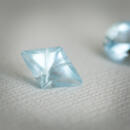
Gem in the Spotlight: Aquamarine
… in shades of blue-green. Aquamarine has a refractive index of 1.577 to 1.583 and is doubly refractive. Aquamarine’s specific gravity is 2.72 and it has a Mohs hardness of 7.5-8.0. For comparison, this means that it is softer than Sapphire, harder than Quartz, and similar to Topaz. This makes it a very durable stone that is suitable for regular wear. But, care should still be taken to ensure that the stone is not damaged. Caring For and Cleaning Aquamarine To maintain the …
-
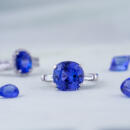
Gem in the Spotlight: Tanzanite
…, even with its rarity and dynamic look, tanzanite is still less in price than more commonly known gems like rubies, sapphires, and emeralds. Gemology of Tanzanite Gemologists refer to this gem as blue zoisite. The vast majority (current … its color. Tanzanite has a Moh’s hardness of 6-7, making it about the same hardness as quartz, softer than ruby, sapphire and emerald and hard than opal. Tanzanite has a refractive index of 1.69-1.70. History and Lore of Tanzanite Tanzanite …
-
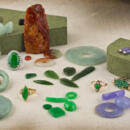
Gem in the Spotlight: Jade
…can be carved, and can be taken to a high polish. Nephrite is commonly found in a darker olive green color but can also be very light green, orangey-red, black, and yellowish green. Jadeite can come in many different colors including pink, purple (often called lavender jade), blue, black, white, and the most valuable/desirable color: a vibrant green. The finest of all green jadeite colors is a saturated emerald green that is almost transparent, and it is called “…
-
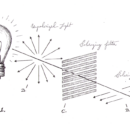
The Magic of Polarized Light
…gemstones, due to their unique chemical structure, actually polarize light themselves. These gems are doubly refractive (DR) and they will split incoming light in multiple directions. Some common examples of doubly refractive gems are sapphire, tourmaline, and moissanite. These are contrasted with singly refractive (SR) gems like diamond that only bend light in one direction. Gemologists use the term birefringence to refer to how doubly refractive a particular gem is. By …
-
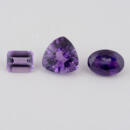
Gem in the Spotlight: Amethyst
… found in smaller deposits in other countries such as Russia, the United States, and Canada. Amethyst is known for its durability with a Mohs hardness rating of 7. For reference, amethyst is roughly as hard as tourmaline, softer than sapphire and topaz, and harder than opal and tanzanite. This makes it a durable gemstone that is resistant to scratching and chipping. It is also resistant to heat and chemicals which means that it can withstand daily wear and tear. Amethyst …
-
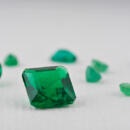
Gem in the Spotlight: Emerald
… and aquamarine) and are valued for their rich green color. The intensity of an emerald’s hue depends on the presence of chromium and vanadium in the crystal structure. Emerald’s Mohs hardness rating is 7.5-8 making it softer than sapphire and harder than amethyst and other quartz varieties. The refractive index of emerald ranges from 1.57 to 1.58, making it a moderately refractive gemstone. Its specific gravity ranges from 2.65 to 2.75. One of the distinctive features of …
-
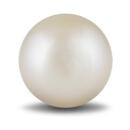
Gem in the Spotlight: Pearl
… rainbow colors that shimmer on or just below a pearl’s surface). Pearls come in a range of colors, from white to black, with many shades in between. The most valuable pearls are those with a pure, even color, such as white, pink, or silver. Luster: Luster is the intensity of light reflected from a pearl’s surface. Pearls with excellent luster have sharp bright reflections on the surface. Pearls with high luster are more valuable than those with a dull or cloudy surface…